Start Your Dropshipping Business In 7 Steps in 2024
This comprehensive guide will walk you through the essentials to launch your own dropshipping business.
Key takeaways
- Dropshipping is a popular e-commerce model that allows you to sell products without holding inventory, offering a low-cost and low-risk entry into the world of eCommerce
- It represents an excellent option for individuals aspiring to become entrepreneurs, small business proprietors aiming to diversify, and professionals considering a shift into a new career trajectory.
- To successfully launch a dropshipping business, it’s crucial to meticulously select a sustainable niche, establish a user-friendly online store, and collaborate with reliable suppliers, all while implementing a strategic pricing and robust marketing strategy.
What Is Dropshipping?
Dropshipping is a fulfillment model in e-commerce where a store doesn’t keep the products it sells in stock. Instead, when a customer places an order on the retailer’s online store, the retailer forwards the order details to a third-party supplier, typically a manufacturer or wholesaler. The supplier then handles the packing and shipping of the product directly to the customer.

This model reduces the risks for entrepreneurs, as they don’t need to invest heavily in inventory upfront. The primary responsibilities of the retailer in a dropshipping model are marketing and customer service, while the third-party supplier handles product sourcing, stock maintenance, and shipping.
How Does The Dropshipping Business Model Work?
Here’s a step-by-step explanation of how dropshipping works:

- Agreement with supplier: The seller establishes an agreement with a supplier (wholesaler, manufacturer, or retailer) to provide their products.
- Store Setup: The retailer sets up an online store on platforms like Shopify, WooCommerce, or any other e-commerce platform.
- Product Listing: Instead of purchasing inventory, the retailer lists products from third-party suppliers online, setting the retail price at a markup from the wholesale price.
- The customer places an order online: Customers visit the company’s online store and select the products they want to buy. They place an order through the company’s website.
- The seller forwards the order to the supplier: The seller forwards the customer’s order and shipping information and all the necessary information to the supplier.
- The supplier ships the order: The supplier takes responsibility for order fulfillment. They pick, pack, and ship the ordered product directly to the customer’s specified address. Moreover, they can fulfill it themselves or hire third-party logistics.
- The customer receives their product: The customer receives the product they ordered, delivered by the supplier.
This model allows for flexibility, as the retailer doesn’t need a physical location or warehouse for inventory, but it also comes with challenges like reliance on third-party stock and potential shipping complexities.
Before you start your drop shipping business
These are essential pre-steps to ensure you’re well-prepared to navigate the competitive e-commerce landscape effectively.
- Market Research: Dive deep into understanding the current market trends, the products in demand, and potential niches that might be underserved. This will give you a clear direction on which products to offer and will help identify your target audience.
- Business plan development: Start by creating a detailed business plan outlining your business goals, strategies, and financial projections. This plan will serve as your roadmap.
- Raise networking and support: Build a network of like-minded entrepreneurs and seek support from mentors or business groups. Connecting with others in the field can provide valuable insights, advice, and emotional support during challenging times.
- Understand Legalities: Register your business, obtain required licenses, and familiarize yourself with e-commerce laws and regulations. It’s also good to consult with a legal professional such as; LegalZoom, FindLaw, etc to ensure you’ve covered all bases.
Step-by-step guide to starting a dropshipping business
So now, let’s take a deep dive into the direct process of creating a dropshipping business. Follow these steps to make your dropshipping store succeed.
Step 1: Niche Selection
In an industry where nearly 30% of online stores rely on dropshipping, competition runs high (source), and establishing a unique identity for your brand becomes of the utmost importance.
So, another avenue to set yourself apart is by honing in on a niche - a specific customer segment that your business will cater to.
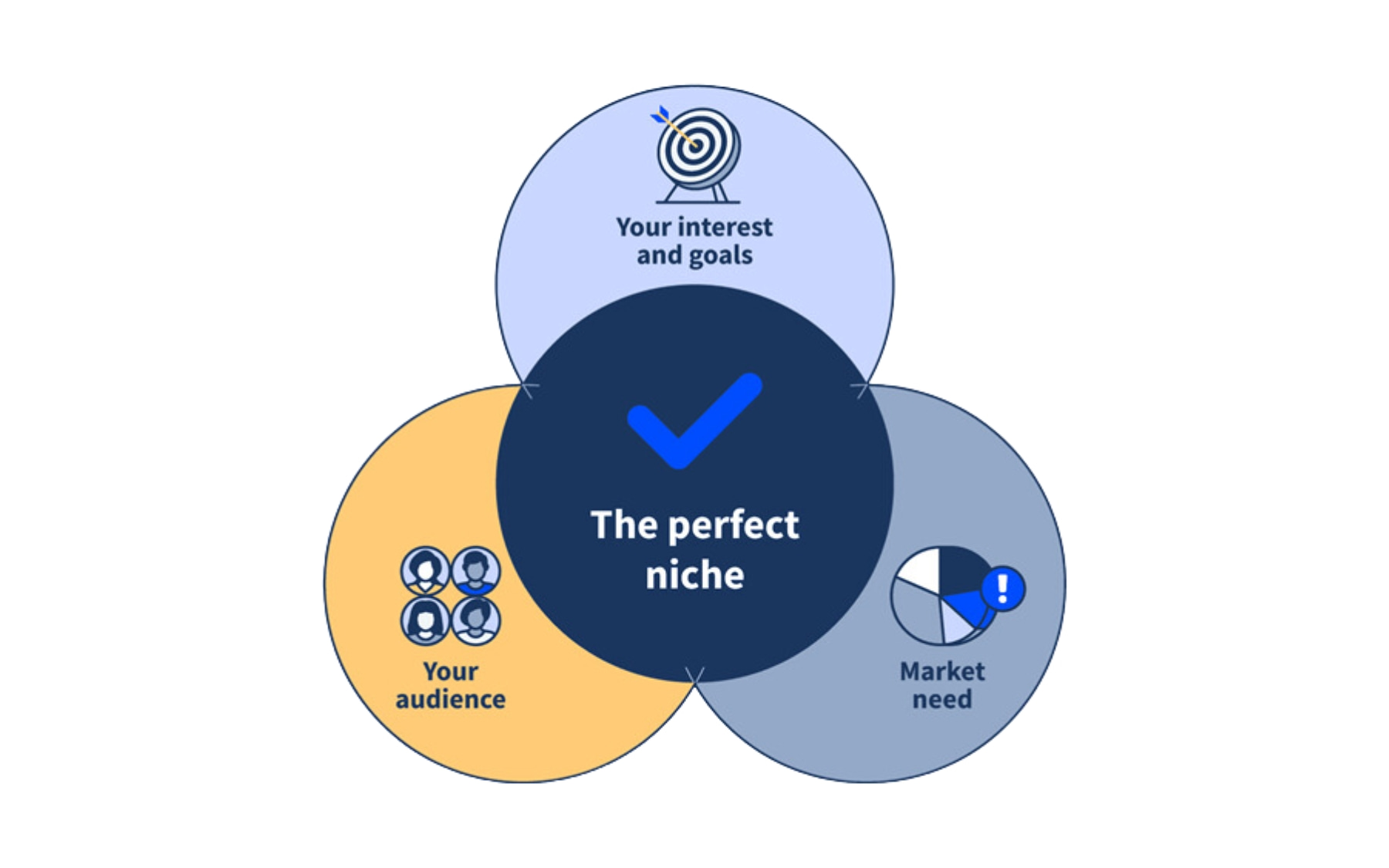
To help you select the ideal niche for a flourishing online venture, consider these tips:
- Start with your passions and expertise. The more familiar you are with your niche, the better you can connect with your audience.
- Keep an eye on trends. Opt for high-demand products, irrespective of the season, for sustained profitability. Explore resources like Google Trends for inspiration.
- Investigate the top-selling items on giant marketplaces like Amazon, eBay, and Walmart. To ensure the niche you choose maintains stable or growing sales, delve into their sales history for more valuable insights and information.
- Engage in Social Listening</b>: Visit Reddit, Facebook, and YouTube platforms. Look for discussions related to your niche products. It’s a great way to gauge interest and discover what people say.
Once you’ve shortlisted potential niches, dive into market research to evaluate the industry landscape and profitability.
Focus on the following aspects during your market research:
- Target Audience and Demographics: Define your target audience by examining demographics such as age, gender, location, income level, interests, and buying behavior.
- Competitor Analysis: Identify and analyze your competitors in the chosen niche. Study their product offerings, pricing strategies, customer reviews, and overall market positioning. Identify gaps or areas where you can differentiate your business.
- Market Trends and Demand: Monitor current market trends and product demand. Are there emerging trends, seasonal fluctuations, or shifts in consumer preferences that you need to be aware of?
- Legal and Regulatory Considerations: Research and understand any legal and regulatory requirements related to your chosen niche and products. Ensure compliance with product safety, labeling, and consumer protection laws.
Step 2: Product Determination
In dropshipping, you have two options for obtaining your products.
- Pre-made products: This type of product is already designed, manufactured, and readily available from suppliers for delivery.
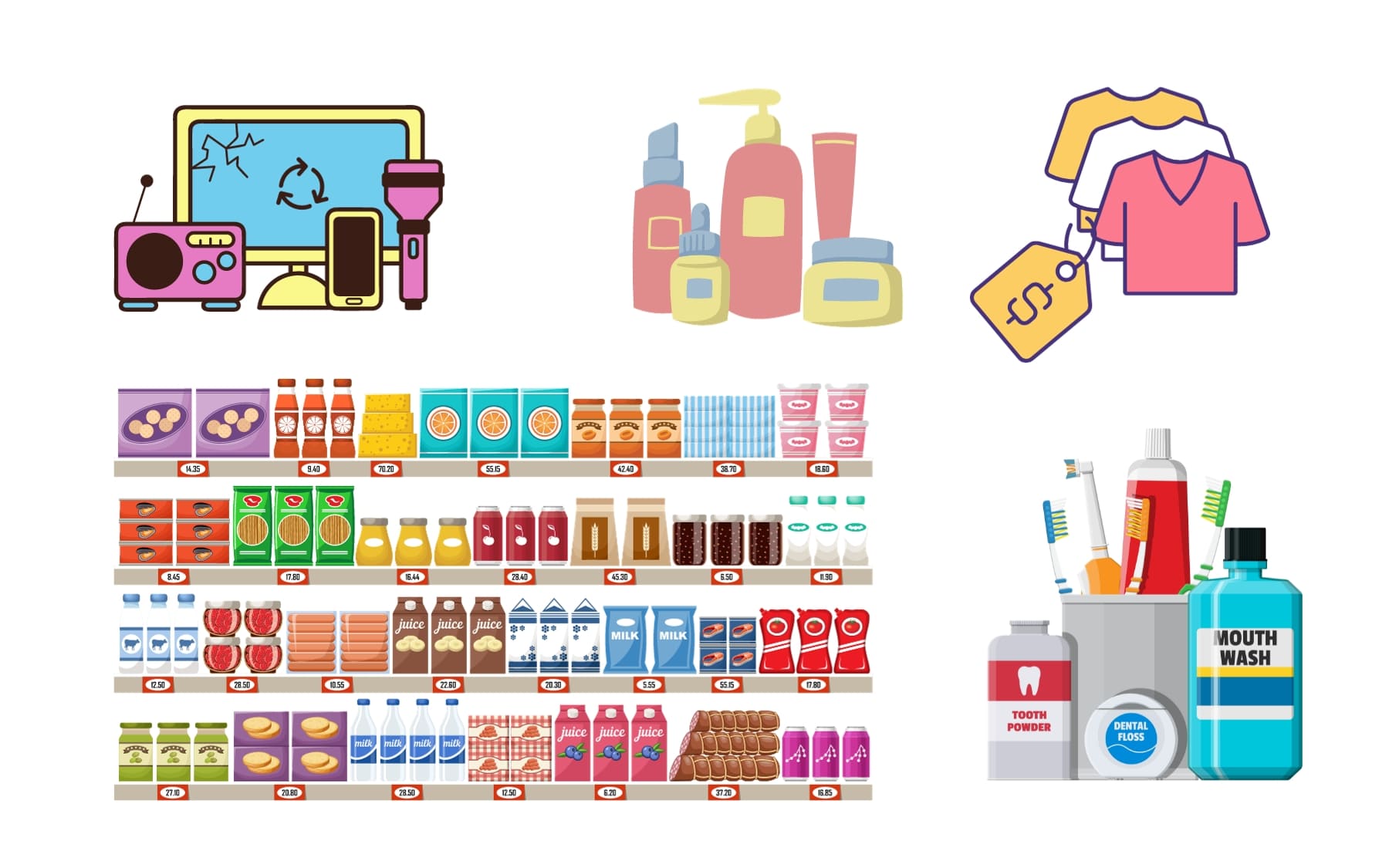
Entrepreneurs can start their businesses without creating or customizing products from scratch. The advantages of standard dropshipping include:
- Accessibility: It allows for easy entry into the market.
- Wide product range: It offers a wide variety of products to choose from
- Low overhead: minimal investment is required for product creation or inventory storage.
However, it also comes with challenges.
- Competition: High competition due to the availability of similar products from various sellers.
- Limited customization: Less control over product design and features.
- Quality control: Dependence on supplier quality and fulfillment processes.
Custom or Print-on-Demand Products: Unlike pre-designed products, entrepreneurs can create custom or personalized products that cater to the specific preferences and demands of their customers.
Printful and similar print-on-demand platforms offer a wide range of products to which you can apply your designs, including apparel, phone cases, jewelry, keychains, mugs, etc.

Thus, choosing this kind of product brings certain benefits, such as
- Unique offerings: The ability to create custom or personalized products tailored to customer preferences
- Brand differentiation: The opportunity to stand out in the market with exclusive designs
- High margins: Potential for higher profit margins with unique or niche products
Several potential risks that dropshippers may face include:
- Complex production: Creating custom products can be labor-intensive and time-consuming.
- Higher costs: Customization can lead to higher production costs.
- Limited scalability: Mass-producing custom items can be challenging, limiting scalability.
Some dropshippers may opt for combining both strategies to offer a diverse range of products while maintaining a unique selling proposition.
Step 3: Creating Your Online Store
This step involves setting up the digital storefront where you will showcase your products, engage with customers, and ultimately facilitate sales.
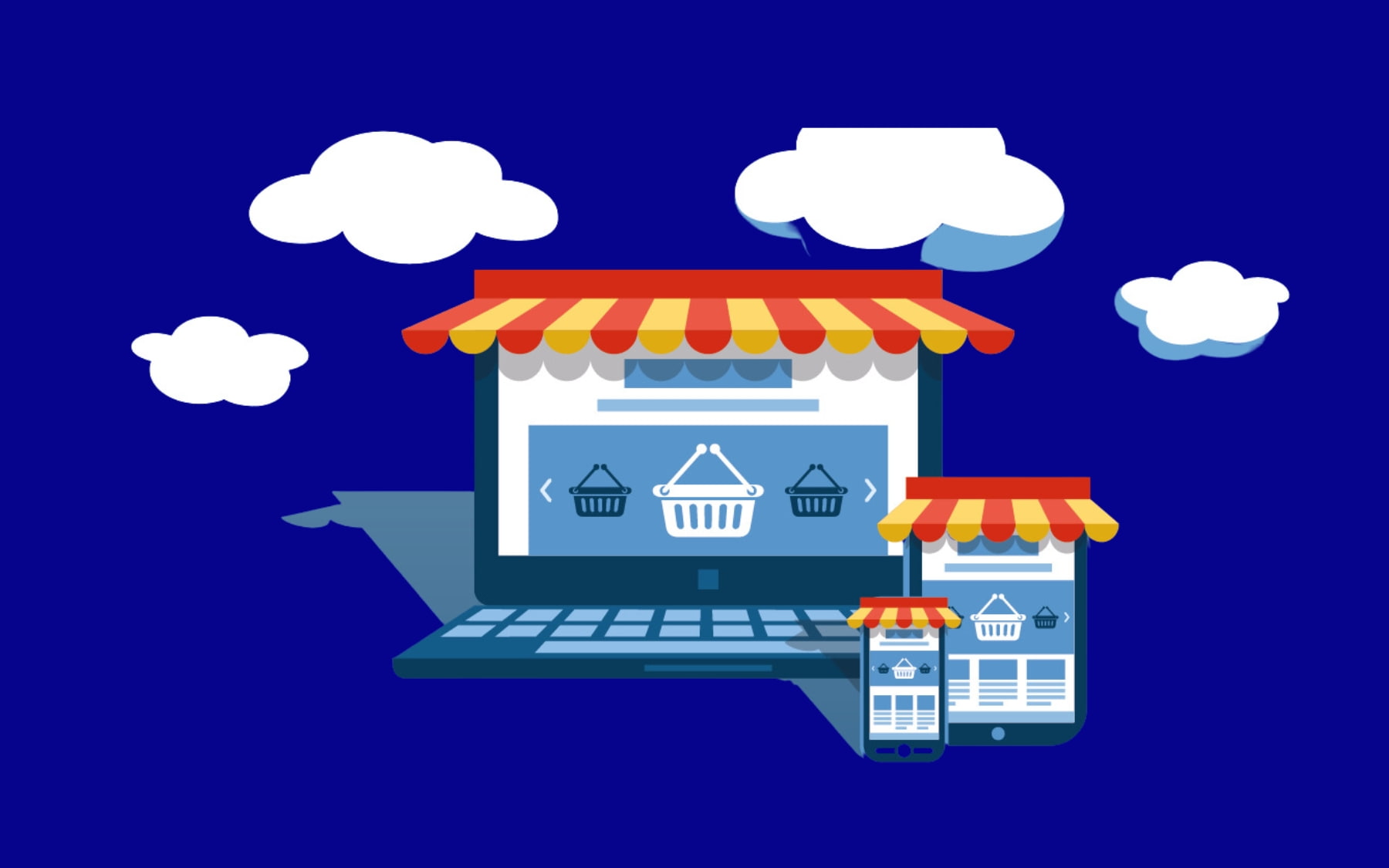
An online store will be a central hub for your dropshipping operations, offering visibility, credibility, and scalability in the competitive e-commerce landscape.
When setting up your online store, prioritize platforms with user-friendly designs for easy navigation and clear product listings with high-quality images. Ensure a variety of secure payment options, mobile optimization for shopping on the go, and robust security features, including SSL certificates and regular software updates.
Among the various options, Shopify stands out as our top choice for launching your dropshipping venture for several reasons:
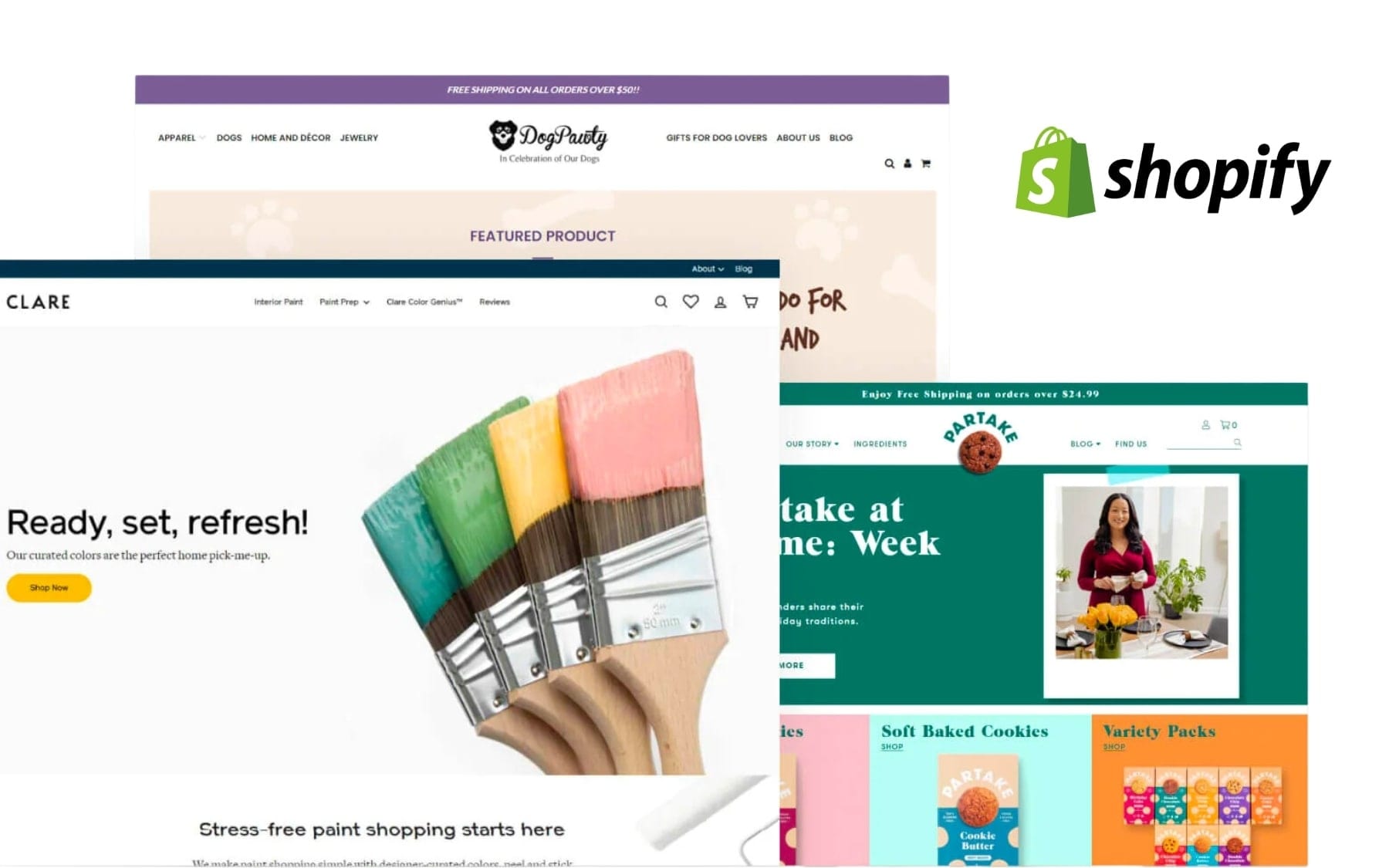
- Cost-effective pricing: Shopify provides cost-effective subscription plans starting from $39 per month, catering to small entrepreneurs who wish to initiate a dropshipping venture without a substantial budget.
- User-friendly interface: Shopify simplifies the setup and management of online stores, even for individuals with limited technical expertise.
- Abundance of dropshipping apps: The Shopify App Store offers over 500 apps specializing in dropshipping and many other apps that empower you to customize and enhance your store according to your specific needs and preferences.
- Diverse payment gateways: Shopify offers a diverse selection of over 100 third-party payment gateways, including PayPal, Stripe, Apple Pay, and more, ensuring flexibility for you and your customers.
- Incorporated SEO tools: Shopify incorporates built-in SEO tools that assist you in optimizing your content and enhancing your store’s discoverability in search engine results.
Considering alternatives to Shopify for dropshipping? Here’s a brief overview:
- Wix: This is a straightforward website builder with drag-and-drop features. It’s great for small dropshipping stores, though it’s not as specialized as others.
- WooCommerce: A robust e-commerce tool for WordPress users. It’s highly customizable with many plugins and is adaptable for dropshipping.
- BigCommerce: This platform is packed with features and designed for growth. It has tools specific for dropshipping, making it ideal for expanding businesses.
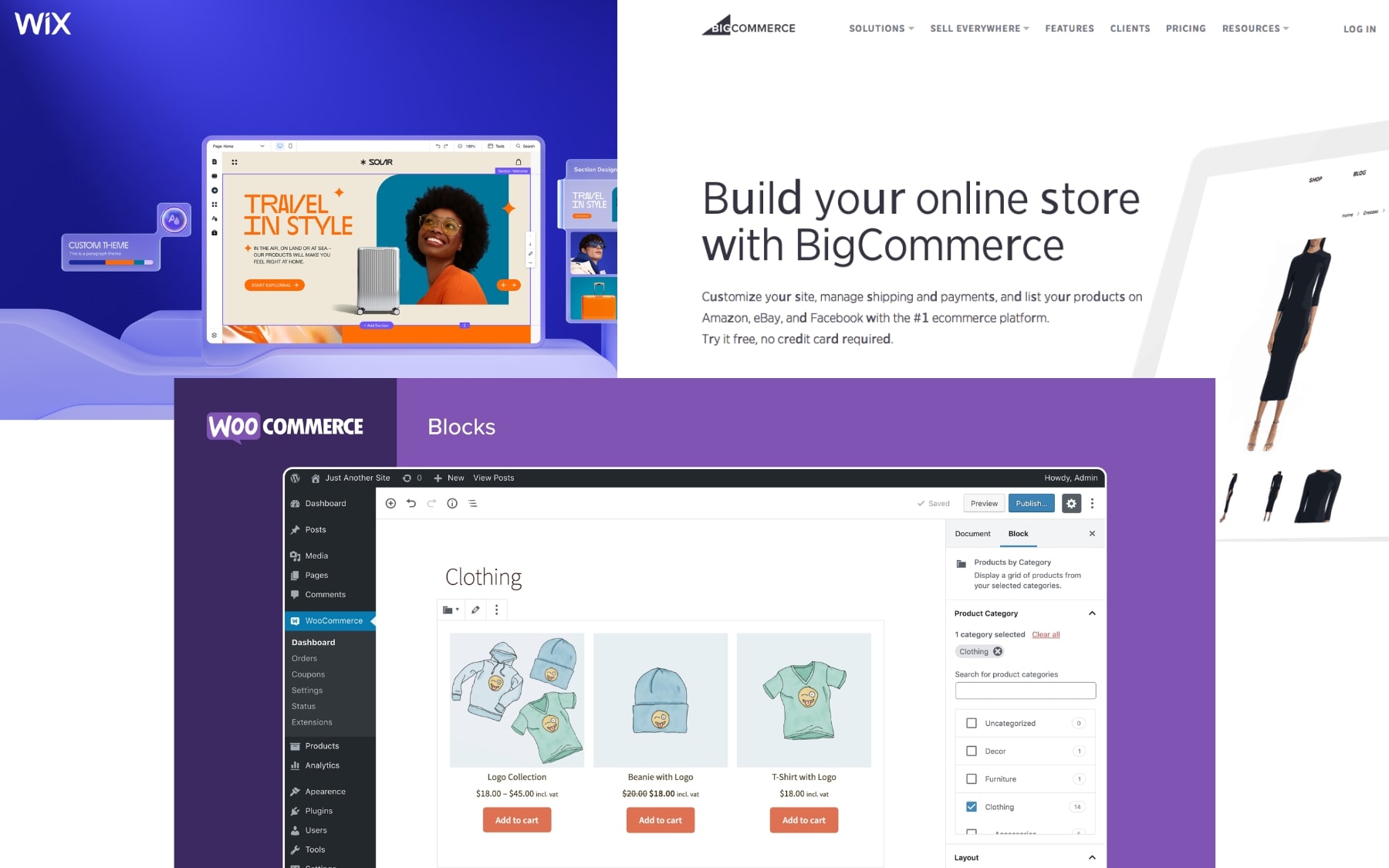
Step 4: Supplier Choosing
The success of your dropshipping business significantly hinges on the suppliers you collaborate with, as they not only provide the products but also handle the crucial task of delivering them to your customers.
When searching for suppliers, keep these key factors in mind:
- Legitimacy: Check the supplier’s reputation. Look at their client list, business license, and customer reviews to gauge their credibility and service quality.
- Minimum Order Quantity: Find out if there’s a required upfront payment due to a minimum order amount.
- Additional Costs: Beyond the basic price, remember to factor in other fees like subscriptions, packaging, refunds, and platform charges. This will help in understanding true profit margins.
- Product Quality: Place a sample order to inspect product and packaging quality. Also, compare offerings from different suppliers.
- Order Fulfillment: Assess how long the supplier takes to process and ship orders. Ensure they handle returns efficiently.
Several suppliers work seamlessly with Shopify, simplifying the dropshipping process. Here are some recommended options:
- Printful: Printful specializes in custom, print-on-demand products, ideal for businesses offering personalized merchandise.
- Spocket: Spocket offers a wide range of products from EU and US-based suppliers, ensuring faster shipping times for customers.
- AliExpress: It offers access to a vast product range, flexibility in pricing, and a diverse supplier base. You can directly connect the app to your Shopify store.
You can explore additional reputable suppliers such as SaleHoo, Doba, Dser, Modalyst, and Wholesale2B, to diversify your product offerings and source unique items.

Connecting the dropshipping app to Shopify is straightforward. You can follow the following process to have a clear illustration.
- Install the App: Visit the Shopify App Store directly from the admin dashboard, search for your chosen dropshipping app, and click “Install.”
- Authorize: Follow the prompts to authorize the app’s access to your Shopify store.
- Configuration: Configure the app settings according to your business requirements, including product selection and pricing.
- Import products: Use the app’s features to import products into your Shopify store, including product details, images, and pricing.
- Manage orders: Monitor and manage orders through the app, which may include automated order fulfillment with your chosen supplier.
When working with suppliers, follow these tips:
- Clear Communication: Always communicate openly and effectively to resolve issues quickly.
- Monitor Inventory: Keep a close eye on stock levels to avoid overselling or unexpected delays.
- Evaluate Performance: Regularly review how your suppliers are doing and think about alternatives if problems arise.
- Diversify Suppliers: Reduce risks by partnering with several suppliers instead of relying on just one.
- Offer Value: Strengthen your relationship by being a dependable and valuable client to your suppliers.
Step 5: Pricing Strategy
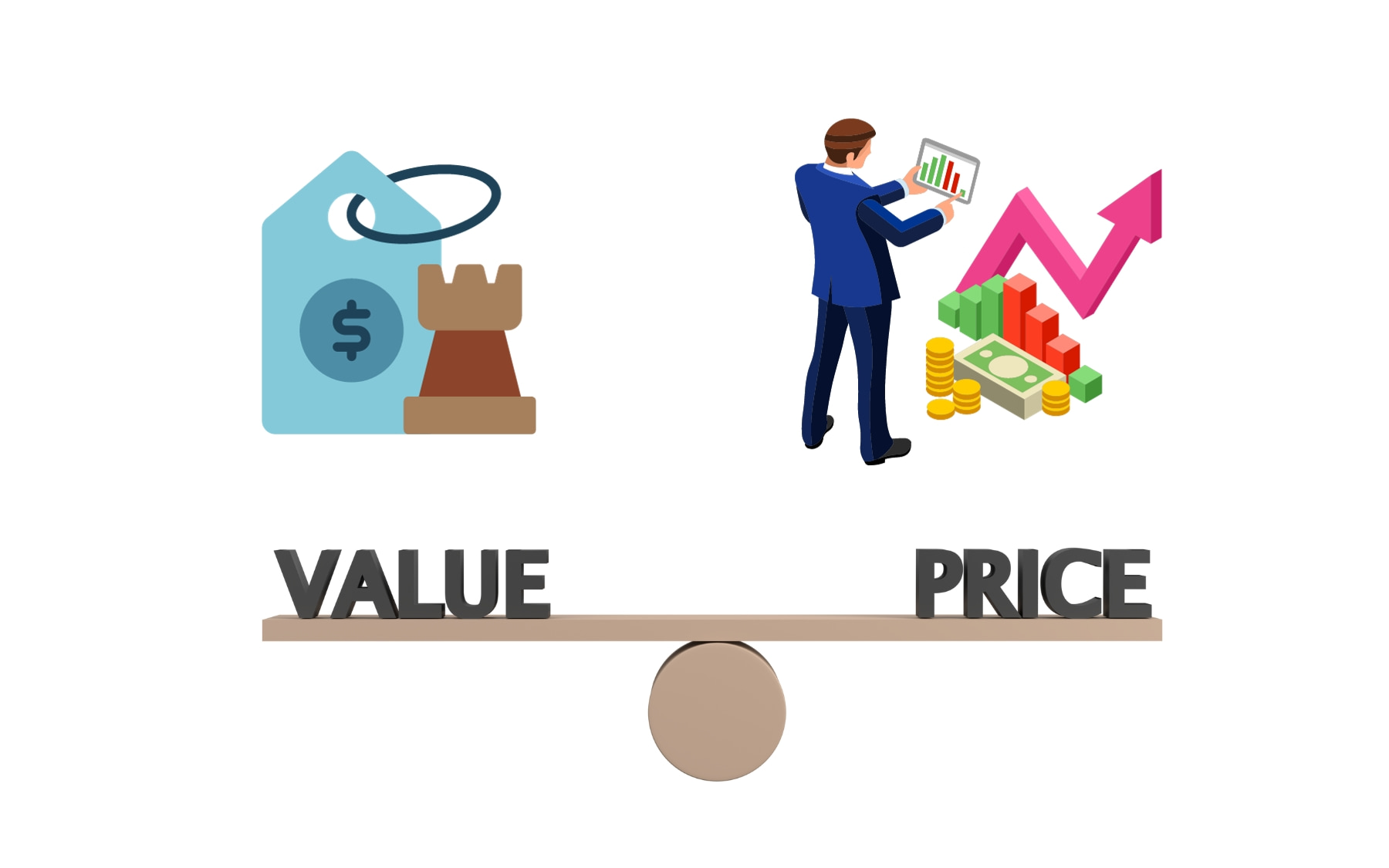
When determining your final price, consider these factors:
- Product Cost: This is the base price you pay for the product, including the wholesale rate, shipping, and other related expenses.
- Operating Costs: Think about overheads like website hosting, marketing, support, and transaction fees.
- Profit Margin: Decide the profit you want to make on each sale, which should also support business growth.
- Market Research: Look at what competitors charge and the going rate for similar products.
- Customer Perceptions: Understand how customers view your pricing, taking into account your brand’s positioning and the value they see in your product.
- Seasonal Trends: Adjust prices based on seasonal demand or industry trends.
Competitive pricing strategies are key for a thriving dropshipping business. Keystone pricing, discount pricing, and bundle pricing are some tactics to consider.
Remember, prices can change frequently and unpredictably. Navigating these changes from suppliers is essential. Stay in close communication with them, adjust your retail prices as needed, and negotiate better terms when possible. Consider diversifying your suppliers and always revisit your pricing strategy to stay both competitive and profitable.
Step 6: Crafting A Marketing and Sales Strategy
Unlike traditional retail models, where businesses might rely more heavily on brand reputation and organic traffic, dropshipping businesses’ focus is often on optimizing advertising and branding.
These following types of marketing and advertising strategies usually work the best for dropshipping:

- Search Engine Optimization (SEO): SEO entails a set of practices aimed at boosting your website’s ranking and visibility on search engine results pages.
- Blogging: Craft informative content that educates your target audience about the benefits of your products. Consider creating listicles or how-to guides that spotlight your offerings.
- Email marketing: Incentivize sign-ups with introductory discounts, and use email campaigns to disseminate news about new product launches and enticing discounts.
- Social media marketing: Expand your reach by sharing your product offerings across diverse social networks. Visual platforms like Instagram and TikTok provide excellent starting points for engaging with potential customers.
- Referral marketing: Implement this strategy once you’ve garnered some initial sales. Encourage customers to share referral links to your products with their friends or family, rewarding them with commissions.
- Affiliate Marketing: Similar to referral marketing, this approach involves collaborating with content creators who promote your products. Affiliate marketing often offers higher commission rates.
- Performance Marketing: Secure heightened visibility for your business by investing in advertising space on platforms like Google Ads and Facebook Ads. Along with the specific marketing strategy, a suitable sales plan should be prepared and implemented simultaneously to powerfully convert your marketing efforts into tangible sales.
Step 7: Handling Other Essentials
A thriving dropshipping business requires more than just sourcing products and marketing. It’s crucial to emphasize that you cannot cut corners when it comes to establishing your business in a legal and proper manner.
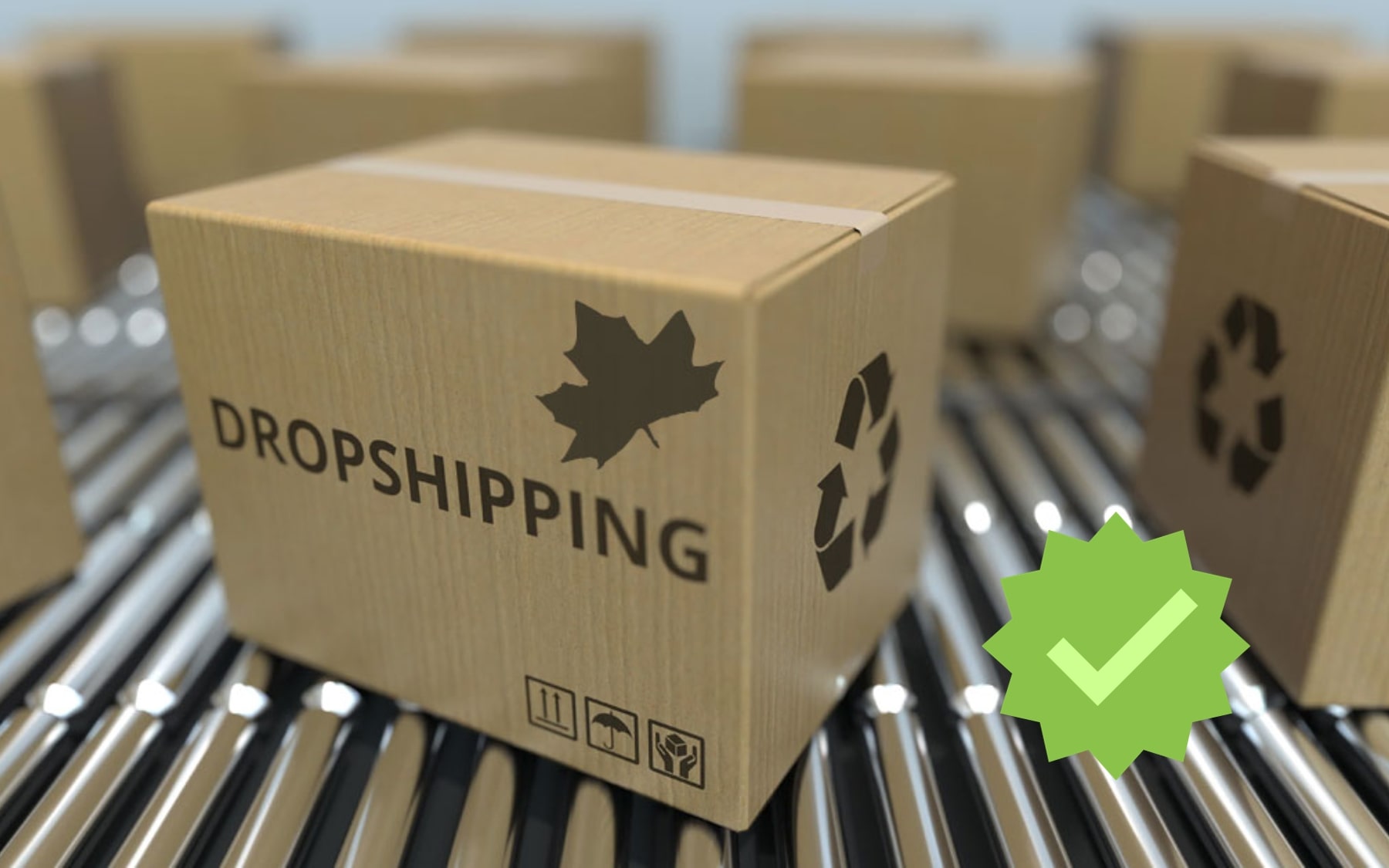
Here are several aspects that must be noticed besides the core step:
- Permits and licenses: Investigate the permits and licenses necessary to operate a legal dropshipping business in your region. Compliance with local, state, and federal regulations is vital to avoiding legal issues down the line.
- Legal structure: Consider the legal structure of your business, such as a sole proprietorship, partnership, LLC, or corporation. Each has its advantages and implications for taxes and liability.
- Taxes: Understand your tax obligations, including sales tax, income tax, and any other relevant taxes. Consult with a tax professional to ensure proper compliance and tax planning.
- Insurance: Consider business insurance to protect against unforeseen circumstances, such as product liability or shipping issues.
- Customer service: Implement a robust customer service automation system to address inquiries, resolve issues, and enhance the overall shopping experience.
- Create the necessary webpages: Develop essential webpages on your e-commerce site to build trust with customers and address legal requirements. These may include:
- Privacy Policy: Detail how customer data is collected, used, and protected.
- Terms and Conditions: Outline the rules, responsibilities, and liabilities associated with using your website.
- Refund and Return Policy: Clarify your policies for product returns, exchanges, and refunds.
- Contact and Customer Support: Provide clear contact information and avenues for customer inquiries and support.
- Accounting and bookkeeping: Establish an efficient accounting system to track your finances, monitor expenses, and ensure accurate financial reporting.
- Cybersecurity: Safeguard customer data and protect your e-commerce site from cyber threats. Implement security measures like SSL certificates and regular security audits. Additionally, the use of a reliable datacenter proxy can be a valuable asset in safeguarding your online operations from potential threats.
Dropshipping vs. Other Ecommerce Models
The world of e-commerce contains multiple business models, and dropshipping just plays a part in such a large area. Thus, when putting on a comparison, they will drive their own potential and downsides.
To be more specific, let’s take a look at some typical e-commerce models on the market and see which is going to suit your goals.
| Aspect | Dropshipping | Traditional E-commerce | Print-on-Demand | Subscription Box Model |
|---|---|---|---|---|
| Initial investment | Low | High | Low | Moderate to high |
| Inventory management | Not required; handled by suppliers | Required | Not required; print on demand | Required |
| Control over product quality | Limited | Full | High | High |
| Profit margins | Lower | Higher | Variable | Variable |
| Brand customization | Limited | Full | Moderate | High |
| Fulfillment speed | Typically slower due to supplier processing | Can be faster | Slower due to print times | Can vary based on subscription cycle |
| Risk of unsold inventory | Minimal | High (unsold inventory risk) | Minimal | Minimal (depends on subscribers) |
| Scalability | Relatively easy | Moderate | Moderate | Moderate to high |
| Logistical complexity | Lower (outsourced) | Higher (self-managed) | Moderate | Moderate |
| Recurring revenue potential | Limited | Limited | Limited | High |
| Customer loyalty building | Moderate | High | Moderate | High |
| Content creation requirement | Low | Moderate | Low | High (curated offerings) |
The information provided in the table offers a general overview, and individual experiences may vary based on specific business strategies and market conditions.
Final Words
In conclusion, embarking on a journey to start a dropshipping business offers a world of opportunity for aspiring entrepreneurs and seasoned business owners alike. With the right strategies, dedication, and commitment to providing exceptional customer experiences, you can turn your e-commerce dreams into reality.
So, take the plunge, follow the steps outlined in this guide, and watch your dropshipping business thrive in the dynamic digital marketplace. Best of luck on your entrepreneurial journey!
FAQs
However, to establish a competitive and sustainable dropshipping business, some initial investment is typically required. Essential expenses may include domain registration, e-commerce platform fees, and marketing expenses.
However, it's important to understand that while the concept of dropshipping itself is legal, the specific legal requirements, permits, and regulations can vary depending on your location. It's crucial to register your business, obtain any necessary permits or licenses, and adhere to tax laws in your jurisdiction.
New Posts







